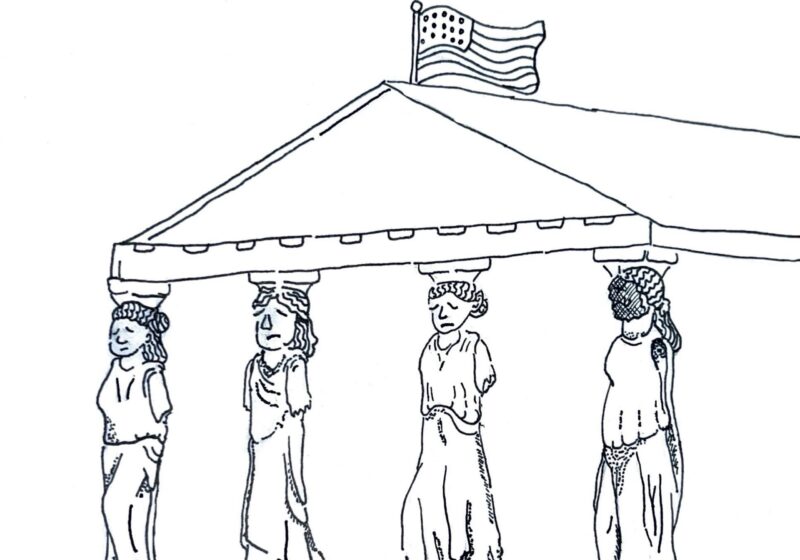Leslie Feinberg’s 1992 publication “Transgender Liberation: A Movement Whose Time Has Come” explored how transgender history can be used to inform activism. The pamphlet traced transgender history across the globe, from ancient Rome to the present day. Feinberg provided this history in tandem with a call for a transgender rights movement, encouraging solidarity amongst people from all movements against oppression. 33 years later, this message is more important than ever.
In his first weeks back in power, Donald Trump rapidly ordered attacks on the transgender community. On Inauguration Day, Jan. 20 of this year, Trump signed an executive order declaring government recognition of only two sexes in order to “[defend] women from gender ideology” and “[restore] biological truth.” Among other effects, this has already ended the ability of Americans to change their gender markers on official documents. This order also bars imprisoned trans women from incarceration in female prisons, as well as moving to end access to medical gender transition for prisoners.
That same day, Trump revoked dozens of orders from the previous administration. A week later, Jan. 27, Trump signed an order attacking transgender people within the military. Then, Jan. 28, he signed another order restricting gender-affirming care for individuals under the age of 19. Most recently, Feb. 6, he signed an order barring transgender women from women’s sports.
In addition to the executive orders, dozens of pages relating to the LGBTQ+ community were removed from governmental websites, including memorial pages dedicated to Nex Benedict and Matthew Sheppard, two individuals who were killed by anti-LGBTQ+ hate crimes. On Jan. 29, a memorandum titled, “Steps to end federal funding of gender ideology,” ordered public-facing government websites to remove mentions of “gender ideology” by Jan. 31. Most noticeably, “Transgender” and “Queer” were removed from the U.S. State Department Travel Informational page, which now only provides resources for “LGB” individuals.
These are only a portion of the national measures attempting to restrict and police transgender existence in the last few weeks. These executive orders have already resulted in restriction, panic, and uncertainty. Hospitals have preemptively barred transgender youth from accessing care, gender marker changes on passports have been halted, their recipients’ legal documents held in limbo, and a transgender woman in a Texas prison was even instructed to change into “male clothing.” The orders overwhelmingly target trans women, who are already at higher risk of violence.
On a brighter note, many people are working to fight these orders. A federal judge blocked the transfer of trans women into men’s prison facilities, the New York State Attorney General declared that stopping trans health care would be in violation of state anti-discrimination laws, and numerous other legal officials have stood up to anti-trans legislation across the nation. The new administration needs to know that these actions are intolerable.
It is important to document these measures and the actions taken to combat them. As a student working with historical archives, I feel compelled to turn to transgender history for a path forward. It is somewhat simple to trace legal and medical policies, even as governments try to censor them. However, it is more difficult to ascertain how these policies tangibly impact individuals. This is where history comes in.
Over winter break, I presented my thesis research at the American Historical Association conference. For most students, it would be an obvious choice to widely celebrate this prestigious opportunity. However, as with many factors in my life, I have to consider simple things with greater intentionality. Why? My poster, “Vice Versa: Female to Male Transsexuals Before Transgender Liberation,” leaves no question of the topic. Publicly sharing my work is in itself a political action. I was asked if I was comfortable, in the current situation, to be posted visibly on social media in association with my research about transgender histories.
I am not upset that the question was asked, I am enraged that it has been made necessary. I should spend my final semester worrying about job applications and saying goodbye to my friends. I have to worry about everything my peers have to worry about, all the while burdened by anxiety about my future. I wake up questioning how to maintain access to meds. I ride the bus and debate pursuing surgeries while they remain legal. I scribble my assignments, mentally crossing off life paths. I worry about all of this, and I am one of the lucky ones.
For every transgender person like me, there are countless others with far less safety and security. Visibility is a revolutionary act; it is dangerous, taxing, and complicated. Many people cannot choose whether or not to be visibly transgender. I have levels of privilege and anonymity afforded to me by my whiteness and my ability to “pass” as a man. That’s exactly why I refuse to stand down. I would rather have a target on my chest than sit quietly while my friends and I are erased from society. So, to share or not to share my research? For me, there is only one possible answer. I refuse to bow out now. I cannot and do not wish to hide that I am transgender. As a student of history, I cannot erase my own.
I will continue to uncover a portion of the long line of trans people who have lived before us. If we can envision ourselves in the past it will become easier to act in the present and forge a better future. In this way, transgender history is vital to transgender survival. The webpage erasure of Nex Benedict and Matthew Sheppard reflects what is lost if we forget our histories. Not only do we lose LGBTQ+ pasts, but we forget the admittance and condemnation of homophobia and transphobia. We lose national moments of solidarity where the world came together in mourning and outrage. Forgetting the past means forgetting the hope so often born from disaster.
There are many things that the transgender community needs to survive right now. We need that hope. We need medical care, legal aid, friends, and vigilance. Above all, we need each other. Whether it’s through protests, support groups, or history books, connection and community are essential.
Transgender identity was not new: perhaps it began 33 years ago when Feinberg named the liberation movement, or 61 years ago when the first U.S. gender clinics opened, or in 1919 when Magnus Hirschfeld founded the Institute of Sexology. People have medically transitioned for over a century, and they’ve identified outside the gender binary for millennia longer than we’ve labeled them transgender.
Trans history is woven with strings of beauty and joy, pain, and violence, but most importantly, tenacity and perseverance. Everyone has a role to play in the fight for transgender liberation, and now is the time to step up. This is not a moment for despair; it’s a call to action.
For anyone who feels isolated, alone, and unprecedented, here are some places to start:
- Transgender Warriors, Leslie Feinberg
- Transgender History, Susan Stryker
- We Both Laughed in Pleasure, Lou Sullivan
- Black on Both Sides: A Racial History of Trans Identity, C. Riley Snorton
- How Sex Changed, Joanne Meyerowitz
A Short History of Transmisogyny, Jules Gill-Peterson





